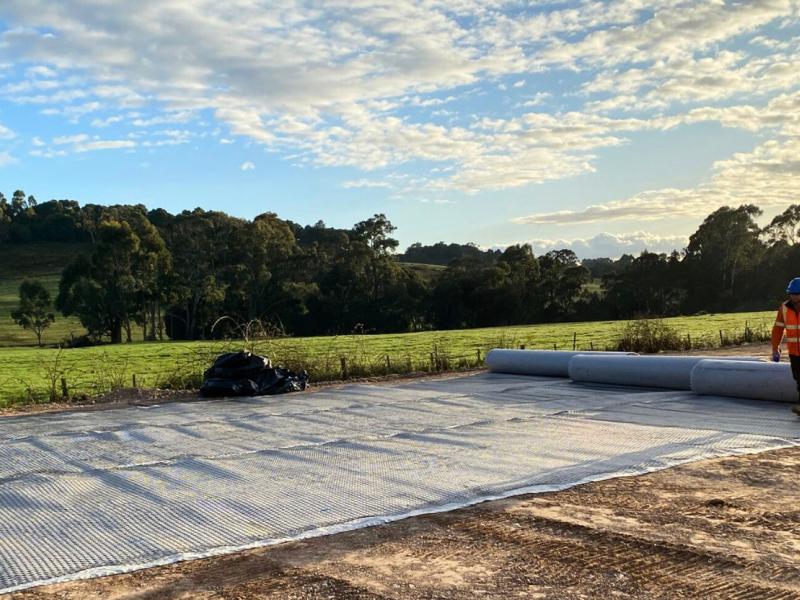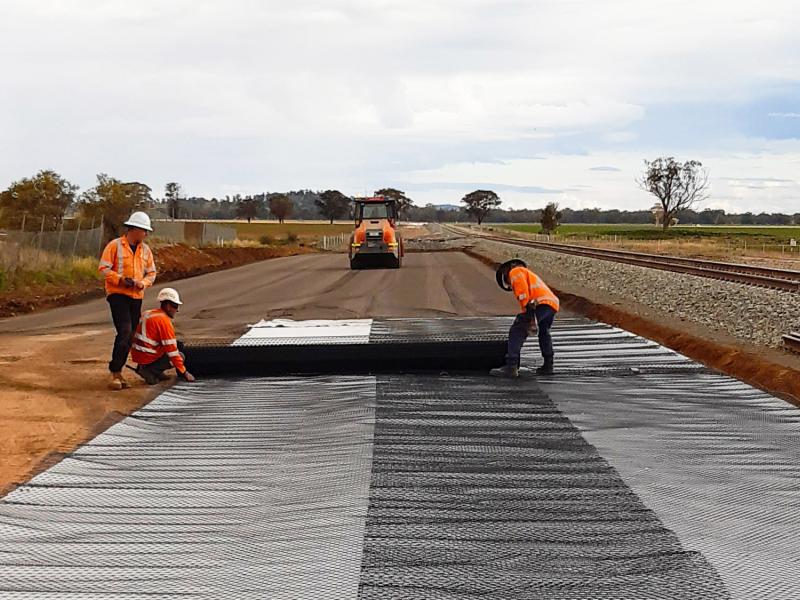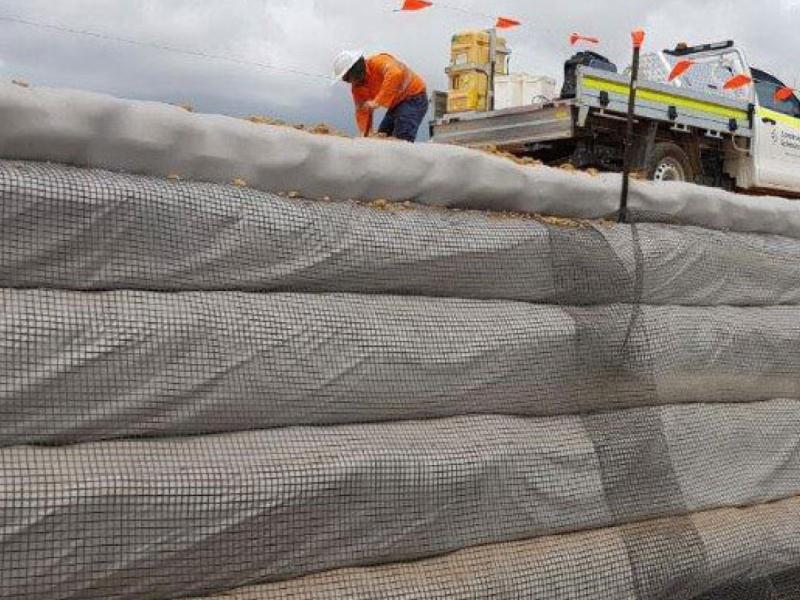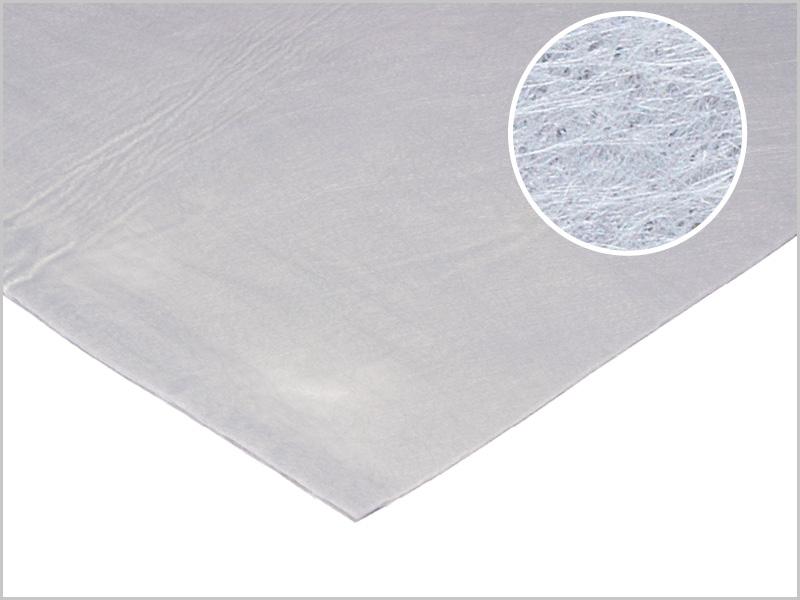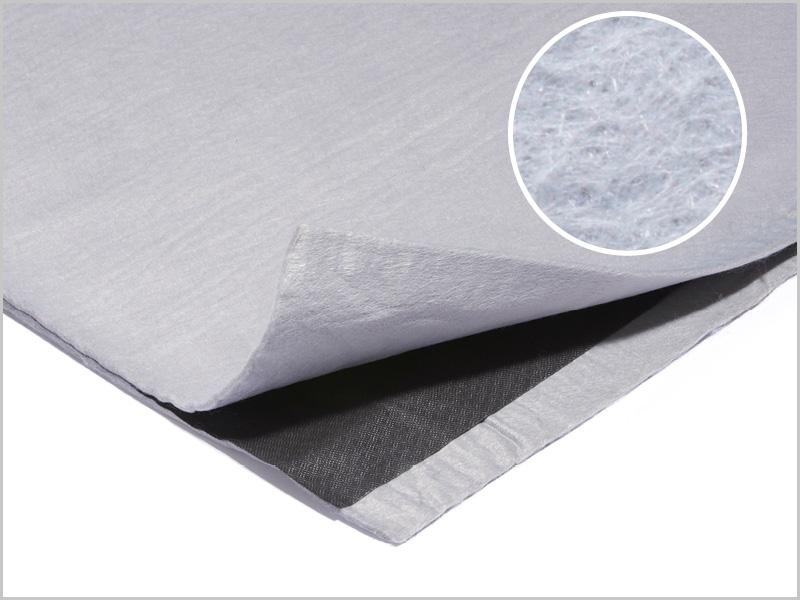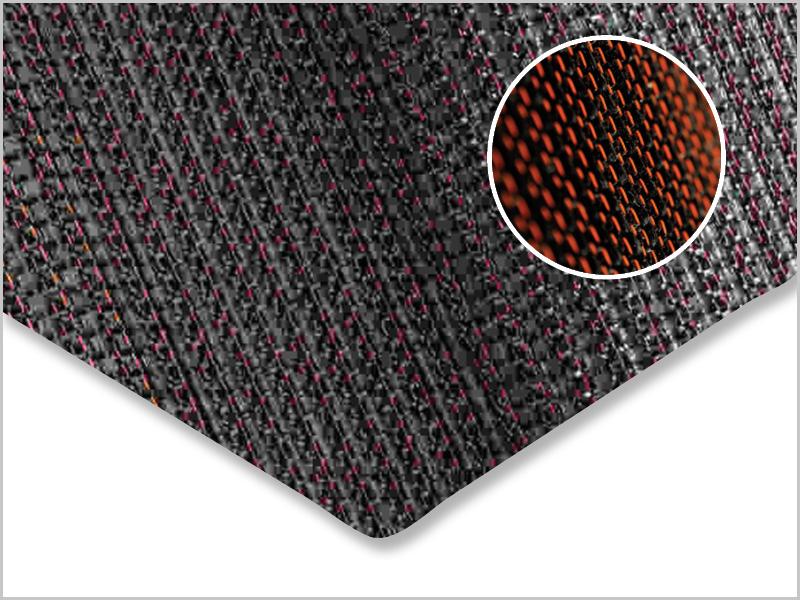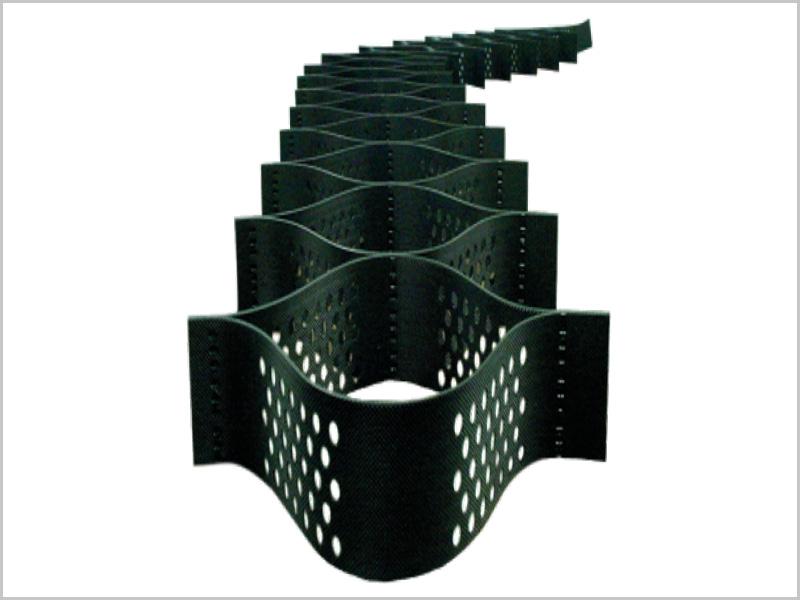
A multiaxial geogrid made from a punched polypropylene sheet that is used to form hexagonal structures with triangular apertures to effectively confine and interlock aggregate particles.
It outperforms conventional biaxial geogrids and significantly reduces time and costs in the construction of roads, highways, railways, airports, working platforms and heavy-duty pavements.
The interlocking mechanism between TriAx® multiaxial geogrid and the granular material creates a composite known as the mechanically stabilised layer (MSL). This leads to an increase in bearing capacity of underlying soft soils to provide greater support for heavier loads.

WHY CHOOSE MULTIAXIAL GEOGRID?
- Reduces aggregate layer thickness by more than 50% with no performance loss, meaning less subgrade soil needs to be excavated and disposed
- Improves bearing capacity on railway projects and stabilises the rail ballast and track bed to limit the movement and displacement of the rail ballast, leading to a reduction in maintenance
- Enhances layer performance, enabling the use of lower quality fill materials and recycled aggregate fill
- Cost savings in foundation material required to build working platforms by up to 50% and a reduction in CO₂ emissions with less excavation required
- Durable structure that provides greater stability and stiffness in challenging weather and environmental conditions
- Multiple layers form a stiff beam that spreads heavy loads over a larger area, reducing differential settlement
- Can be installed quickly, reducing construction costs when building all pavement types over soft ground for standard and heavy vehicle loads
- Proven laboratory and field calibrated design method
The TriAx geogrid is supported by international research and trafficking trials at the University of Nottingham, Transport Research Laboratory (TRL), Building Research Association (BRE) and in-house at Tensar’s Technology Centre. The research has proven that there is a performance improvement compared with conventional biaxial geogrid.
The granular layer thickness required for a working platform can be determined using the state of the art, T value method, that is built into the TensarPave software for routine calculations. For advanced analysis, the Tensar Stabilised Soil Model can be provided on request.
Design of road pavements using TriAx is supported by TensarPave design software that is available free to Geofabrics clients.
The Tensar T-Value Guide for working platforms is available upon request.
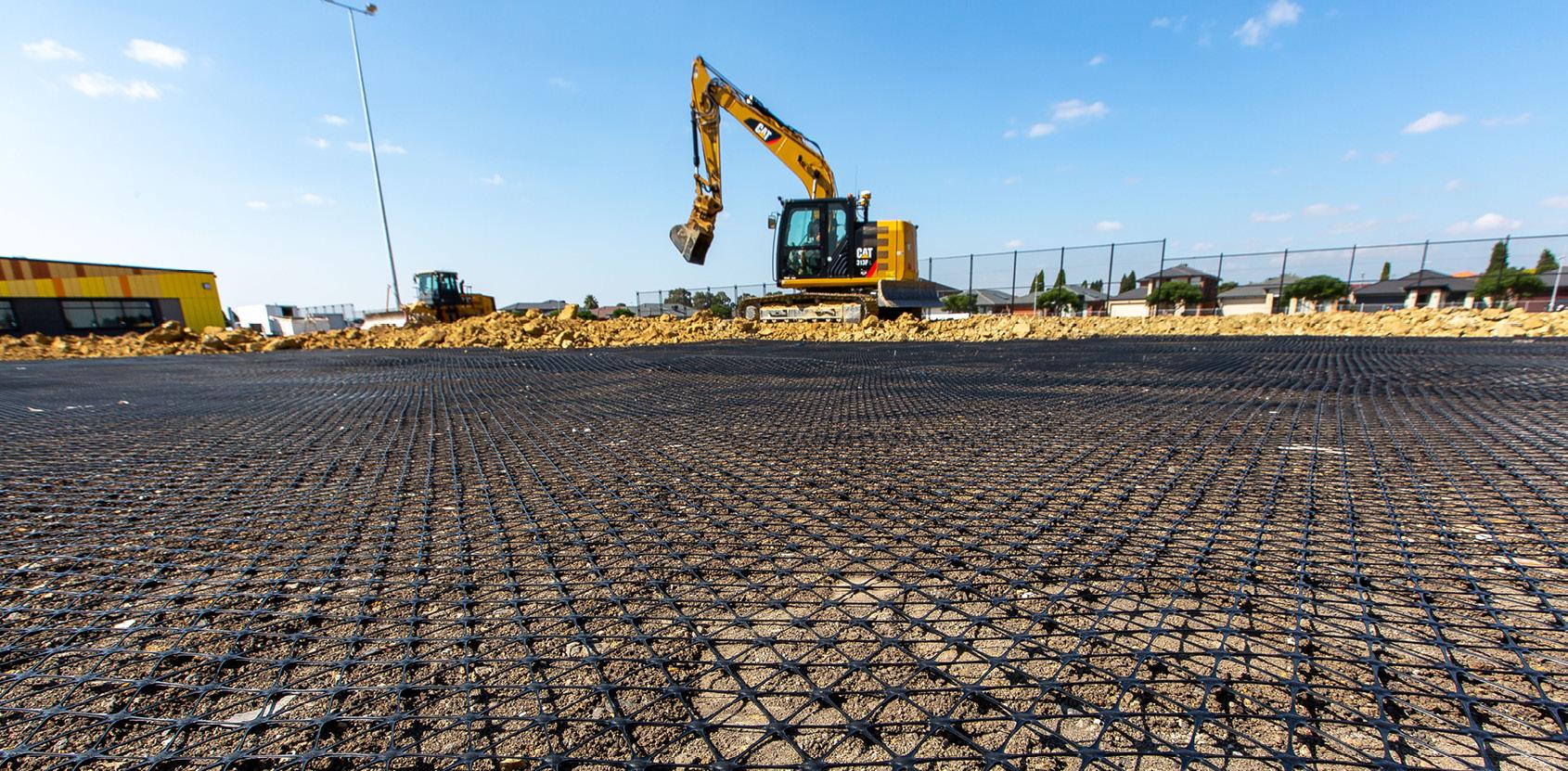
Tensar TriAx Range
|
Code |
Description |
Width (m) |
Length (m) |
|
TX150-380075 |
Triaxial Geogrid TX150 |
3.8 |
75 |
|
TX160-380075 |
Triaxial Geogrid TX160 |
3.8 |
75 |
|
TX170-380050 |
Triaxial Geogrid TX170 |
3.8 |
50 |
|
TX190L-380050 |
Triaxial Geogrid TX190 |
3.8 |
50 |



